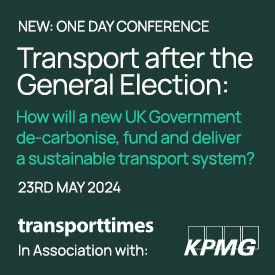The Welsh Government has published its new transport strategy which pledges a commitment to public transport

The Welsh Government has outlined a raft of measures to “drive modal shift to public transport” in its new transport strategy.
One of the measures is the development of “policies on parking for all vehicle types”. This appears to signal a challenge to the common practice of local authorities making car parking free or very cheap, in the expectation that this will improve footfall in town centres and beauty spots but with no regard for the negative impact on other transport modes.
“We need to encourage people to make the change to more sustainable transport,” said transport minister Ken Skates as he launched the Llwybr Newydd strategy. The title means “New Path”. “Where we need new transport infrastructure, we will take a new approach. We will use the sustainable transport hierarchy to give priority to meeting the demand for travel by walking, cycling and public transport ahead of private motor vehicles.”
We need to encourage people to make the change to more sustainable transport
However, the government is continuing to devote large amounts of capital funding to road schemes which are premised on the future journey time savings accruing from faster car journeys and increased traffic. Last autumn, when the transport strategy was in development, the government signed a Public Private Partnership contract for the widening of 11 miles of road, for which it will pay a 30-year service charge totalling £1.14bn, excluding VAT and inflation.
The Welsh Government’s investment in low-emission buses, by comparison, is limited to £3.6m for six electric buses for Snowdonia and joint funding of two electric buses for Flintshire.
Its previous transport strategy, in 2008, pledged to make “substantial progress” in key areas, including reducing greenhouse gas emissions and improving public transport. In 2013 it cut bus grants by over 25% and its Bus Services Support Grant has remained frozen at £25m per annum ever since, coinciding with declining passenger numbers and the collapse of several bus operators.
Llwybr Newydd provides more specific commitments than its predecessor. Another significant difference is that the Welsh Government now owns the Wales and Borders train operating company. Bus operators have signed the Bus Emergency Scheme 2 (BES2), which enables the government and local authorities to have a bigger influence on future service provision. These changes give the Welsh Government a more direct interest in increasing public transport patronage, alongside greater accountability for failure to deliver promised improvements in train and bus services.
For rail, the government pledges improvements over the next five years which include making services more attractive, new stations, network extensions, electrification and more engagement with people and communities via community rail partnerships.
Five-year pledges for bus include addressing congestion hotspots, investing in bus stations and stops, extending the reach of services, and working with bus providers to “attract bus group company investment in their Welsh services, with longer-term funding horizons”. The government also aims to pass “bus legislation that gives the public sector more control”.
Although the government expects all diesel buses to be phased out by 2028, it does not specifically commit to funding electric or hydrogen buses in the next five years. It pledges to “roll out the technology and infrastructure to deliver ultra-low emissions buses”.
Planning policy will maximise use of land close to transport hubs, including railway stations, and focus new housing and workplaces on areas close to public transport. A ‘town centre first’ approach will locate new public services close to where people live and near public transport routes.
We will actively aim to achieve a shift away from private car use to more sustainable transport modes
“We will actively aim to achieve a shift away from private car use to more sustainable transport modes for the majority of journeys,” says the strategy. “We will invest in low-carbon, accessible, efficient and sustainable transport services and infrastructure that enable more people to walk, cycle and use public transport, and low-emission vehicles.”
This article appears inside the latest issue of Passenger Transport.
DON’T MISS OUT – GET YOUR COPY! – click here to subscribe!







